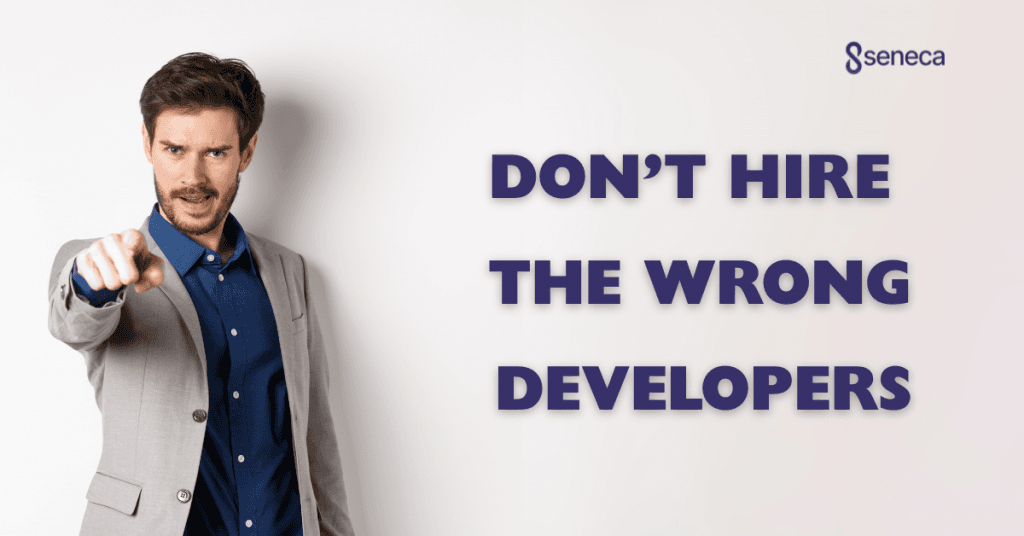What Is The Difference Between Web 2.0 and Web 3.0?
Discover the differences between Web 2.0 and Web 3.0 in this article. Explore how these web versions redefine the digital landscape.
The evolution of the internet has witnessed remarkable phases, each defining how we engage with digital content. Two significant eras, Web 2.0 and Web 3.0, represent transformative shifts in the online landscape. Web 2.0, known for user-generated content and social media dominance, laid the groundwork. Now, Web 3.0 emerges, introducing decentralization and advanced technologies to redefine our digital experiences. In this article, we’ll explore the differences between Web 2.0 and Web 3.0.
What is Web 2.0?
The transition from Web 1.0 to Web 2.0 marked a significant transformation in the digital landscape. It introduced a new era of much more interaction for users. That’s why it gained the nickname of the “Social Web”. This version is characterized by technological progress driven by the quest for more immersive experiences.
Web 2.0 places a strong emphasis on user-generated content, social networking, and digital cooperation. Users now possess the capability to generate and distribute content, establishing global connections through community-driven platforms and dynamic interactions.
Definition and Core Concepts
The emphasis on user-generated content defines Web 2.0 because it allows users to actively create and publish online. This interactive social web paved the way for the emergence of widely popular platforms such as blogs and video-sharing websites.
At the core of Web 2.0 are collaboration, user engagement and content sharing. Web 2.0 specifically designs platforms and tools to facilitate collective contributions and modifications, fostering the free exchange of information, opinions and media. In essence, Web 2.0 has fundamentally transformed the Internet by turning passive information consumers into active participants in the digital landscape.
Web 2.0’s Key Features
The Web 2.0 era marked the introduction of diverse delivery platforms, introduced mobile internet access, for instance. This period brought a wide range of inventive features and dynamic content, fundamentally reshaped online interactions and enhancing numerous new functionalities on the web. Prominent social media platforms such as Twitter and Facebook established online spaces for real-time interactions, multi-user virtual environments and community building.
User-friendly content management systems like WordPress played a key role in popularizing blogging by democratizing content creation. Additionally, sophisticated user interfaces facilitated more responsive web interactions through the implementation of AJAX. The increased use of APIs also enabled the creation of unique combinations of various services, integrating data from multiple sources and presenting it in cohesive, interactive formats.
Pros of Web 2.0
In contrast to Web 1.0, Web 2.0 brought numerous advantagess by transformaing the digital environment. By prioritizing improved user interactions, Web 2.0 empowered websites to provide more interactive tools for content creation as well as promoted engagement between users and platforms.
This shift ultimately resulted in the expansion of social networks, facilitated the creation of global communities for both personal and professional communication and connections. Web 2.0 transformed the Internet into a space where users could engage online, generated extensive data that eventually gave rise to analytical and big data-driven tools, further optimized services.
Cons of Web 2.0
Despite its numerous benefits and advancements, Web 2.0 created certain challenges. Data privacy remains a significant concern arising from Web 2.0, as users became apprehensive about platforms utilizing their data in diverse ways and sharing personal information.
The dominance of major digital platform like Google and Facebook raised concerns about centralization and monopolistic practices, potentially stiffedcompetition. Many platforms, eyeing advertising revenue, resorted to intrusive ads or subtle content manipulations for additional financial gain.
What is Web 3.0?
Named as “Semantic Web,” Web 3.0 builds upon its predecessor and represents next evolutionary phase of the World Wide Web. This decentralized version enhances the interconnected and intelligent digital environment by harnessing the capabilities of AI and advanced algorithms to deliver more personalized content. Additionally, Web 3.0 emphasizes decentralized systems, aims to enhance control and security in online interactions and handling of sensitive data.
Definition and Core Concepts
Web 3.0 marks a shift in the Internet’s trajectory with emphasis on semantic understanding. Unlike just storing data, it understands context for tailored interactions. The focus on decentralized systems aims to break away from monopolies, offers users greater control through a distributed approach.
Moreover, Web 3.0 delivers an enhanced Internet experience through technologies like augmented reality (AR) and virtual reality (VR), blends the physical and digital realms for deeper engagement. Ultimately, it amalgamates various advancements to shape a more intelligent, user-centric online world.
Web 3.0’s Key Features
The primary characteristics of Web 3.0 are Semantic Web, decentralized network and system, AR and VR, AI and machine learning.
Sementic Web
The Sementic Web is core feature of Web 3.0 because it brings numerous innovative features. By exploiting technology to understand both data and its context machines can derive meanings and establish connections autonomously without the need for explicit instructions from humans.
Central to the Semantic Web are ontologies, structured frameworks that define conceptual relationships, aiding the discernment of subtle nuances among items. Research Description Frameworks (RDF) enhance this capability by providing a standardized format for describing and exchanging data. When combined, these features shape an intuitive digital environment with a profound level of inherent understanding and context awareness.
Decentralized System
Decentralized systems grant users greater control over their data and interactions in contrast to conventional centralized models of data storage. Blockchain and distributed ledgers provide a transparent, immutable transaction record, enhancing user trust without reliance on a centralized authority. Beyond cryptocurrency applications, this technology has facilitated the development of decentralized systems and applications, operating independently in peer-to-peer networks and circumventing central intermediaries. This autonomy empowers users with increased control over their personal information.
Artificial Intelligence and Machine Learning
Web 3.0 enhances the user experience to a more customized level compared to Web 2.0 through the incorporation of AI and ML. AI-driven systems provide personalized content aligned with the user’s preferences, ensure the relevance of each digital interaction. Leveraging predictive analytics, AI enables machines to anticipate user needs based on their past behaviors. Additionally, advanced recommendation systems utilize ML to continuously improve suggestions over time by learning from user actions and feedback.
Virtual Reality (VR) and Augmented Reality (AR)
By adopting VR and AR, Web 3.0 can provide a more immersive browsing experience. AR integrates digital elements into the real world while VR immerses users in entirely digital environments.
Incorporated into regular internet activities, VR holds the promise of revolutionizing online shopping through features like virtual store walkthroughs. Meanwhile, AR, already integrated into numerous apps, enables users to envision furniture purchases in their homes or engage in real-world gaming experiences with virtual elements.
Pros of Web 3.0
The primary benefit of Web 3.0 lies in restoring control of users’ personal data to the individuals. This reduce exploitation by centralized entities and enhancing privacy. This shift also distributes power among users, fostering a more democratized experience on the Internet. ML and AI play a crucial role in customizing content and recommendations, creating more engaging web experiences. Additionally, advanced algorithms, coupled with AR and VR technology, deepen user engagement levels and enhance content based on individual needs.
Cons of Web 3.0
Web 3.0 presents both promise and challenge. Boasting highly advanced technologies such as blockchain and semantic algorithms, it introduces considerable complexity that may be less accessible to non-technical users. Additionally, the potential misuse of AI and other technologies poses a persistent threat with significant potential consequences.
Comparing Web 2.0 and Web 3.0
Technological Differences
Web 2.0 relies on centralized servers dominated by major corporations that control a majority of data and digital interactions. In contrast, Web 3.0 advocates for decentralized platforms to eliminate singular, monopolizing entities by employing technologies like blockchain to distribute data. While Web 2.0 introduced dynamic and user-friendly interfaces, Web 3.0 advances further by incorporating AI-driven interfaces, AR and VR and other advanced technologies.
Data Ownership and Privacy
In Web 2.0, centralized platforms compel users to exchange personal information for services, often with a limited understanding of how their data is utilized. Web 3.0 shifts towards genuine data ownership, enables users to exercise direct control over their personal data. Users can now decide who accesses their information and under what conditions. As a result, it promotes a more empowered approach to data management.
Monetization Models
In Web 2.0, platforms gather extensive user data, which advertisers utilize to target specific demographics for ads, serving as the primary monetization model. This compromises user experience, often resulting in privacy breaches and intrusive promotions.
Conversely, Web 3.0 prioritizes the exploration of alternative approaches such as cryptocurrency and tokenization, paves the way for microtransactions, decentralized financial solutions and direct peer-to-peer payments.
Potential Impact On Society
Web 2.0 persists in influencing behaviors and establishing impactful global communities. It not only redefined communication norms but also transformed businesses, particularly through the rise of e-commerce and the establishment of the prevailing marketing phenomenon known as influencer culture.
Web 3.0, guided by the principle of decentralization, provides increased digital autonomy and diminishes corporate monopolies by promoting democratized access. Furthermore, its focus on cryptocurrency holds the potential to bring about further revolutions in economic systems.
Conclusion
In conclusion, the differences between Web 2.0 and Web 3.0 are not just technological nuances but signify a profound evolution in how we interact with the digital world. Web 3.0’s emphasis on decentralization, interconnectivity and enhanced user experiences marks a pivotal moment in the internet’s journey. As users and businesses alike, embracing and adapting to these changes is not just an option but a necessity for navigating the future digital landscape.
At 8seneca, our dedication revolves around delivering tailored B2B services, primarily focusing on IT outsourcing solutions. If you need IT outsourcing services, feel free to contact us. Additionally, we’re currently seeking experienced Senior .NET/Angular Developers to join our team. Visit our recruitment center for comprehensive job descriptions and details on other career opportunities within our company.
Related Articles

Jul 22, 2025
Read more
The Cost of Hiring the Wrong Developer (and How to Avoid It)
A bad developer hire can cost you time, money, and trust. Here's how to spot red flags early—and avoid hiring the wrong developer.

Jul 16, 2025
Read more
How to Hire Remote Developers: Your Ultimate Guide
Hire remote developers with ease. Find where to locate top remote developers and vet them right in this guide.

Jul 14, 2025
Read more
CASE STUDY: Making Digital Screens Work Together Perfectly
8Seneca fixed Android display synchronization for a retail client with a simple, effective solution. Download the full case study.

Jul 08, 2025
Read more
Python for Business: How It Saves You Money and Time
Save money & time with Python development for your business. Learn how efficient Python software helps companies grow faster.

Jun 30, 2025
Read more
Digital Transformation for Business: What You Need to Know
Mastering digital transformation for your business. Get clear steps for tech adoption, growth, and a secure future.

Jun 25, 2025
Read more
The Ultimate Guide to Hiring Remote Developers for Your Tech Team.
Learn to hire remote developers successfully. Discover benefits, overcome challenges, and find top global tech talent with 8Seneca's guide.
